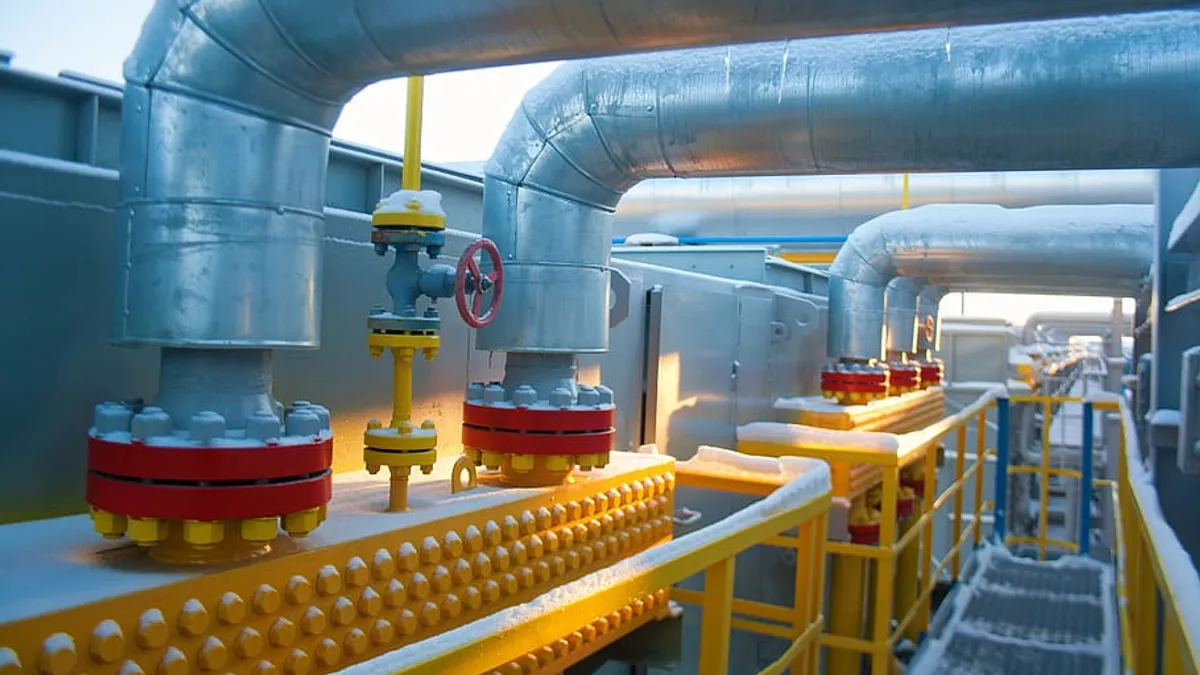Dive Brief:
- A variety of stakeholders in the electric and natural gas industry said there is insufficient communication tools between the two sectors during a Feb. 11 panel at the National Association of Regulatory Utility Commissioners Winter Meeting (NARUC).
- Regional transmission operators (RTOs) need to send appropriate market signals to best utilize pipeline infrastructure, according to the panelists. "The electric industry and the gas industry still do not have the communication tools we need," Stan Brownell, natural gas and LNG business development VP at Argus Media, said on the panel.
- ISO-New England will file their Energy Security Improvements (ESI) proposal with FERC in April, according to Anne George, the grid operator's external affairs VP. The new market rules seek to send appropriate price signals to allow all market participants to provide power when the system needs it most, allowing generators to decide if conditions will worsen and it's worthwhile to save their fuel for another week, she said.
Dive Insight:
ISO-NE faces the most natural gas pipeline constraints of any grid operator in the U.S., as pressure from environmental groups increases over federal permitting of interstate pipelines.
The grid operator has seen barriers to building pipelines in New England through New York, and is proceeding under the assumption that no additional pipeline capacity will be added, Anne George, said during the NARUC panel.
ISO-NE is instead focusing on adjustments to run the system in a way that optimizes its existing fossil fuel infrastructure — five pipelines currently serve the region.
"As the [natural gas] capacity gets utilized on those pipelines, particularly during cold periods, we see very little excess capacity being released into that secondary market. We've seen that the natural gas fleet really is not there," George said, adding that other resources that can be relied on during cold snaps, like coal and oil-burning plants are retiring. "We are thinking about what that means for the wholesale market and accurate price labels so that the resource owners take steps to ensure that they can provide energy and reserves when necessary."
Strategizing needs to continue between the two sectors, Tony Clark, senior advisor at Wilkinson Barker Knauer LLP and former FERC commissioner, said on the NARUC panel.
FERC worked on gas-electric coordination "in the wake of the Polar Vortex in 2014-2015," Chairman Neil Chatterjee said in an emailed statement. "Improving communication between gas and electric market participants was part of the Commission's response plan at the time."
FERC conducted staff-industry meetings on the 2014-2015 Polar Vortex throughout the country, highlighting "the challenges of improving communication between RTOs and pipelines," he said. "Since then, there have been many improvements, but as with everything, we can always do better. The Commission is open to further suggestions and ideas on how to improve that communication."
Stakeholders at NARUC discussed the creation of better price signals for intra-day markets, as gas suppliers have restrictions on changing delivery schedules and the process can take time.
There is "no reporting by any agency, trading organization, utility generator" on pricing when gas generation demand changes in an interim period, such as after day-ahead capacity is procured, Brownell said. He is trying to develop that tool within PJM Interconnection, to calculate the marginal gas costs to dispatch gas in the middle of the day, to create pricing signals for changes in gas dispatching schedules.
"On a long term basis, the need for coordination will probably increase as more intermittent resources at the system, ... [including] no-notice gas service and ... power products such as ramping products, which we've seen for example, developed in California," Matthew Picardi, VP of Shell Energy North America, said on the NARUC panel.
Shell participates in markets administered by ISOs and RTOs as a fuel supplier to generators, as an energy manager or as an off-taker. Picardi said financial incentives for gas suppliers are working and continue to be important, such as rewarding gas units for passive generation performance.
Meanwhile, FERC's authority over interstate pipeline permitting is being challenged at the U.S. Supreme Court.
On Feb. 24, the court will hear oral arguments regarding FERC's decision to approve the path of the $7.8 billion Atlantic Coast pipeline, which crosses the Appalachian Trail national park. The pipeline would bring natural gas from shale fields in West Virginia to gas generators in Virginia and North Carolina, which supporters, including project-backers Dominion Energy and Duke Energy, say is critical to powering the region.















